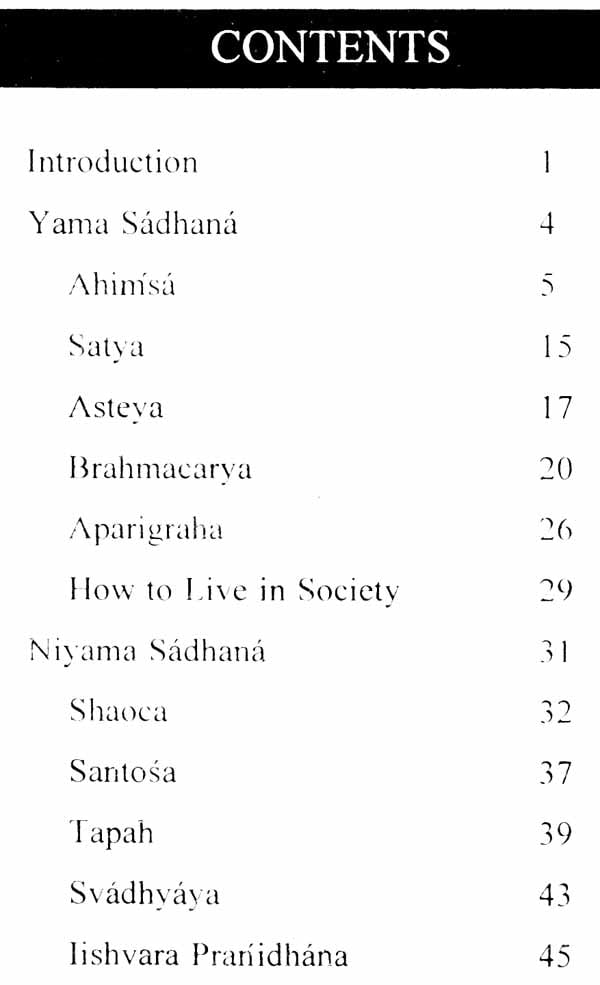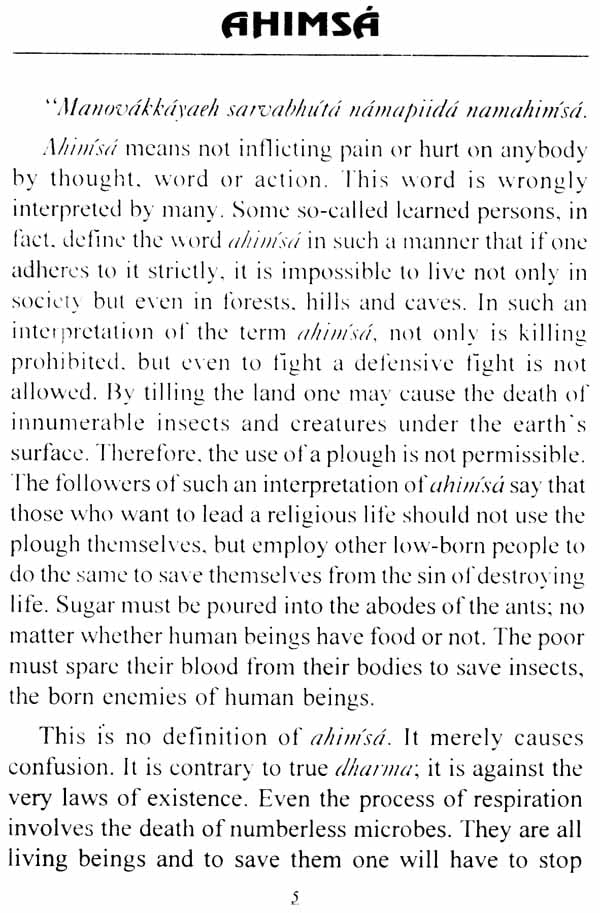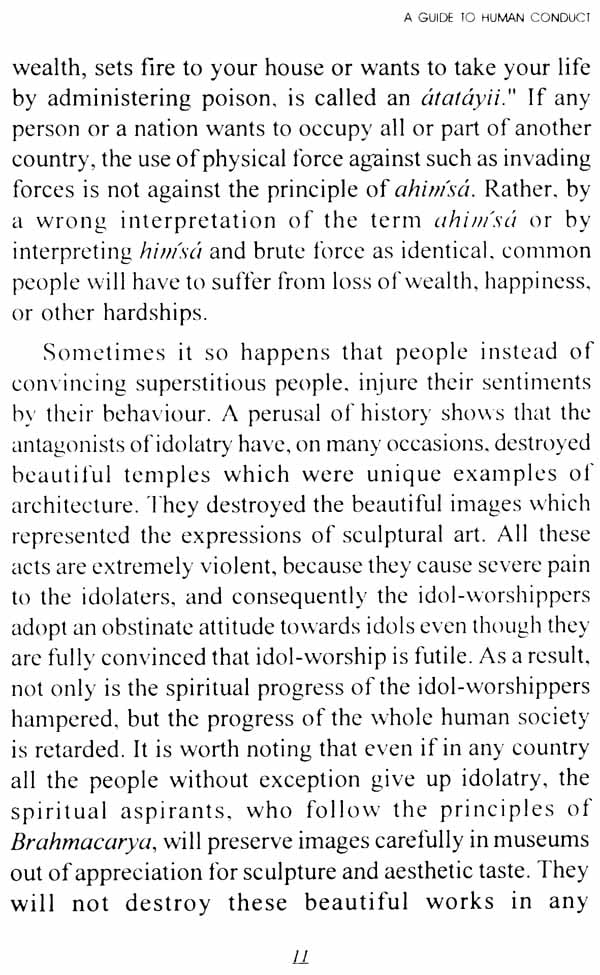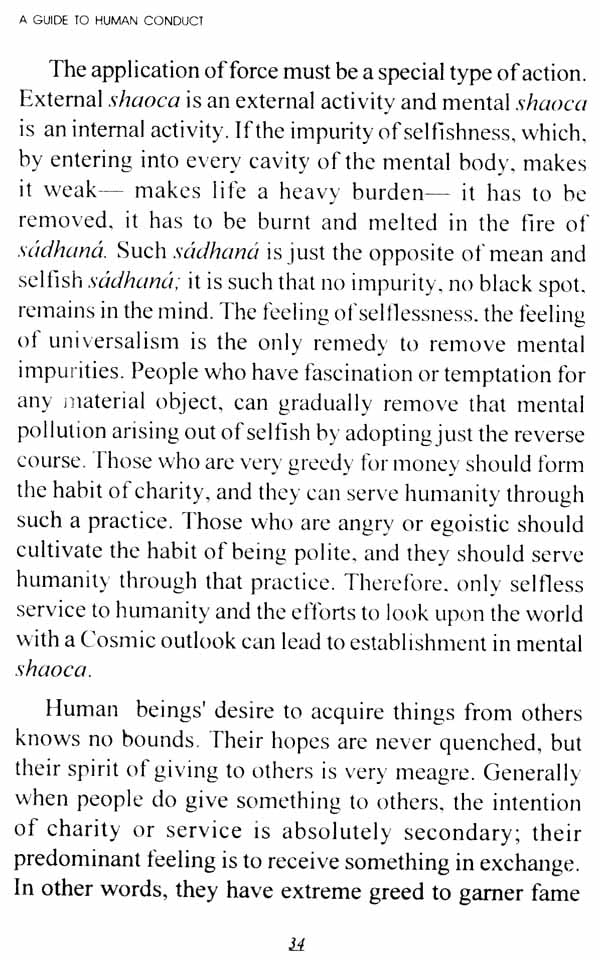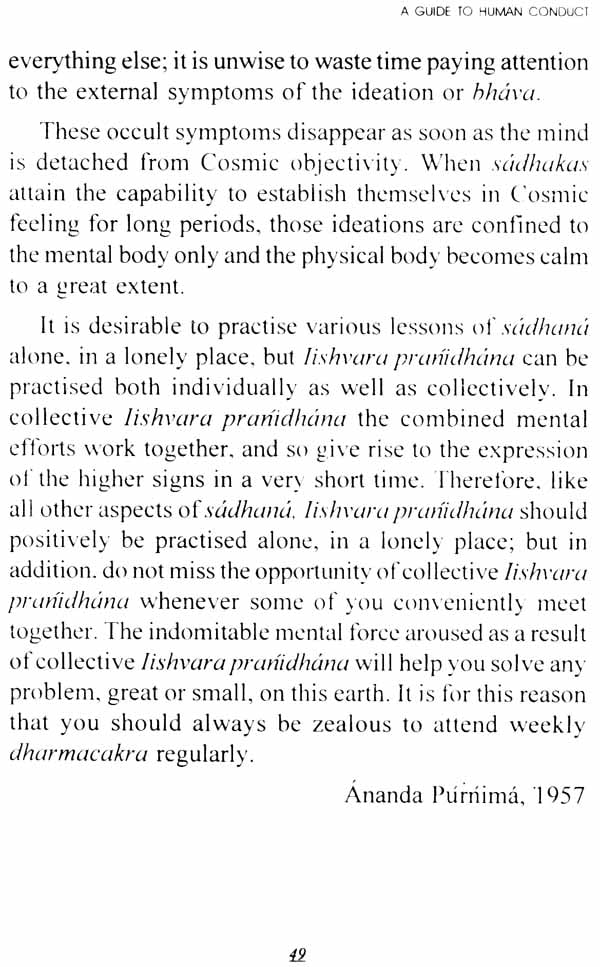
A Guide to Human Conduct
Book Specification
| Item Code: | NAY375 |
| Author: | Anandamurti |
| Publisher: | Ananda Marga Pracaraka Samgha, Kolkata |
| Language: | English |
| Edition: | 2013 |
| ISBN: | 9788172523428 |
| Pages: | 52 |
| Cover: | PAPERBACK |
| Other Details | 7.00 X 5.00 inch |
| Weight | 50 gm |
Book Description
It CANNOT be said that the ultimate aim of human life is not to commit theft; what is desirable is that the tendency to commit theft should be eliminated. Not to indulge in falsehood is not the aim of life; what is important is that the tender icy of telling lies should be dispelled from one's mind.... The aim of such morality is attainment of such a state of oneness with Brahma where no desire is left for theft, and all tendencies of falsehood disappear.
People often say, "I follow neither religion nor rituals; I abide by truth; I harm nobody and I tell no lies. This is all that is necessary; nothing more need be done or learnt." It should be clearly understood that morality is only an effort to lead a well-knit life. It will be more correct to define morality as a dynamic force rather than a static one, because balance in the extroversal spheres of life is maintained by waging a pause less war against all opposite ideas. It is not an intro-external equilibrium. If the unbalanced state of mind takes a serious turn by pressure of external allurement, and if the mental disturbance is found to be intense, it is likely that the power for internal struggle may yield and consequently the external 'equilibrium, the show of morality, may at any moment break down.
That is why morality is, no doubt, not the goal, not even a static force. The morality of a moralist may disappear at any moment. It cannot be said with any certainty that the moralist who has resisted the temptation of a bribe of two rupees would also be able to resist the temptation of an offer of two hundred thousand rupees. Nevertheless, morality is not absolutely valueless in human life. Morality is an attribute of a good citizen and it is the starting-point on the path of Sad hand.
Moral ideals must be able to furnish human beings with the ability as well as the inspiration to proceed on the path of Sadhana. Morality depends on one's efforts, to maintain a balance regarding time, place and person and therefore there may be differences in moral code. But the ultimate end of moralist is the attainment of Supreme bliss and therefore there should not be any possibility of any imperfections of relativity. It cannot be said that the ultimate aim of human life is not to commit theft; what is desirable is that the tendency to commit theft should be eliminated. Not to indulge in falsehood is not the aim of life; what is important is that the tendency of telling lies should be dispelled from one's mind. The Sadhaka starts spiritual practices with the principles of morality, of not indulging in theft or falsehood. The aim of such morality is attainment of such a state of oneness with Brahma where .no desire is left for theft; and all tendencies of falsehood disappear.
Book's Contents and Sample Pages
